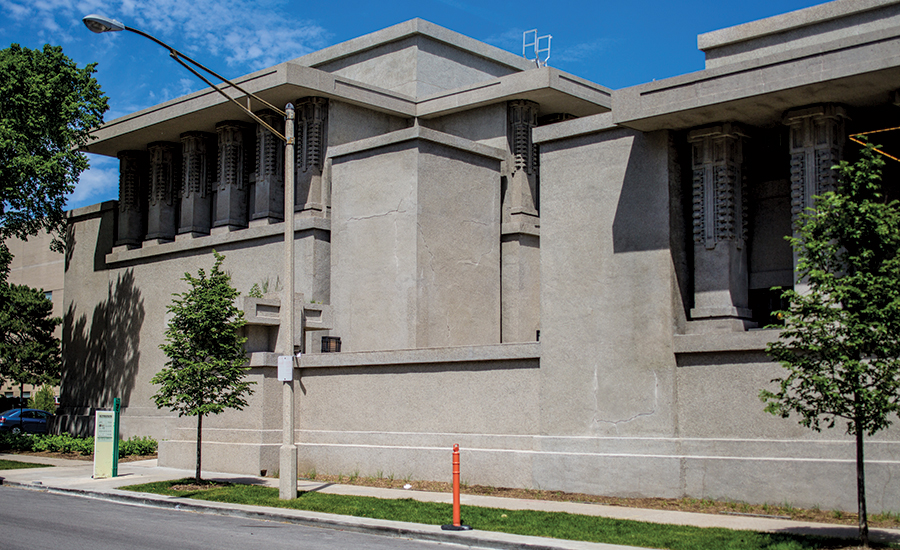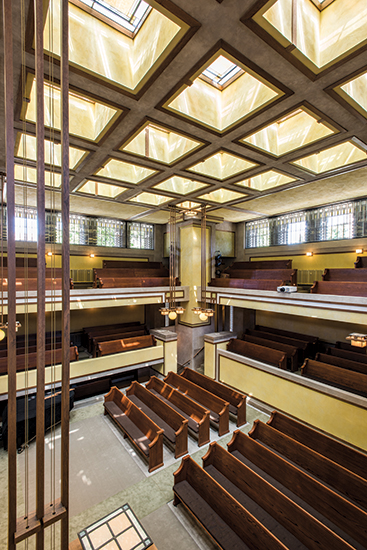Few buildings are truly iconic, but one that qualifies is Frank Lloyd Wright’s Unity Temple. Completed in 1908 in the Chicago suburb of Oak Park, its place in architectural history has long been assured by its seminal synthesis of monumental massing with luminous, richly detailed interior volumes. Closed since Spring 2015 for an ambitious restoration effort led by Chicago-based preservation architect Gunny Harboe of Harboe Architects, it will be ready for reopening in time for the 150th anniversary of Wright's birth on June 8, 1867.
This early Wright masterwork was among the first nonindustrial buildings to use exposed, poured-in-place concrete—augmented by precast ornament—as its primary material. But a century of wear, exacerbated by seepage from an undersized internal drainage system—designed by Wright to avoid gutters on sixteen separate flat roofs—took its toll both inside and out. A 1973 renovation attempted to remediate the cracked and spalled exterior walls with a coating of "shotcrete" (a spray-on concrete) but problems persisted. Nine years ago, a large piece of ceiling fell down, signaling the need for a more extensive—and expensive—permanent fix.
The comprehensive work includes structural reinforcement, a new roofing and drainage system, repair of windows and skylights, an artfully concealed MEP upgrade, and partial replacement of the shotcrete. Inside, concrete and magnesite floors, art glass, plasterwork, paint, light fixtures, and oak trim have all been meticulously restored. The art glass was catalogued, crated and shipped to California for refurbishment. The painstaking plaster and paint work required the removal of multiple layers of over-painting—including an incongruous scheme of white walls and red floors introduced in the 1960s, according to legend, by Wright’s widow Ogilvanna—and the application of new finishes that replicate the translucent originals.
To be sure all this work won’t have to be redone anytime soon, maintenance and repair protocols have been developed to prevent water penetration. A new geothermal ground source heat pump, which required the drilling of nine 500-foot-deep wells on the constrained site, will stabilize temperature and humidity levels year-round, providing air-conditioning and helping to prevent future deterioration.
The project’s $25 million cost is being financed by private donations, including a $10 million grant from the Alphawood Foundation and $1.75 million from the Temple’s congregation. An additional $12 million, currently covered by a loan, has yet to be raised.
Harboe describes his team’s work on the project as “challenging but also incredibly rewarding. This is the epitome of what we want to be doing as preservation architects. It’s what we live to do.”








